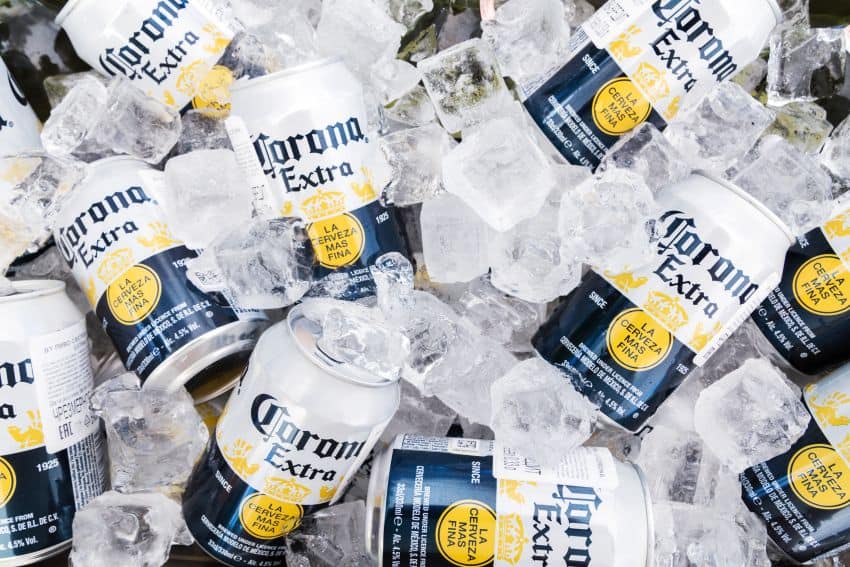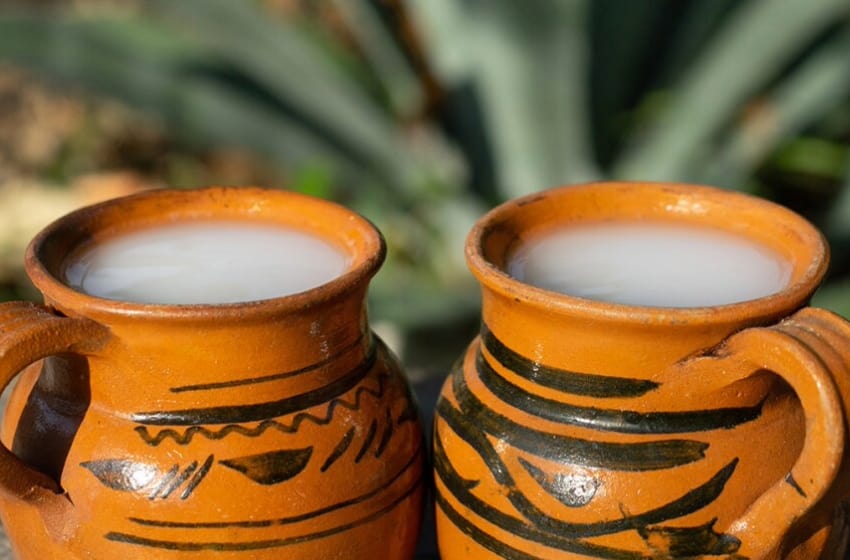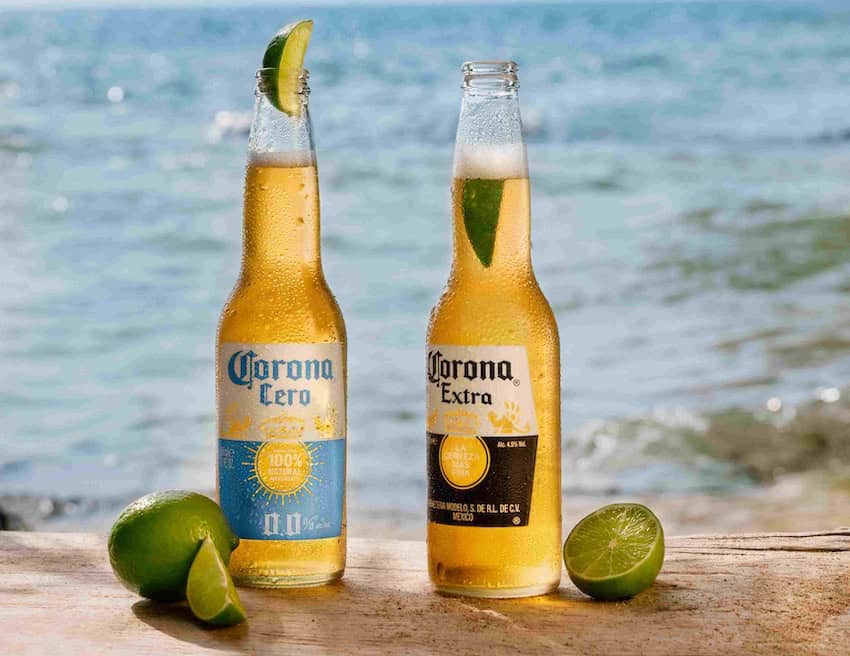It’s a sweltering summertime afternoon. The prima burns mercilessly, but you person salvation successful hand: a wide solid vessel catching airy similar a miniature sun, a wedge of lime perched astatine its mouth. With that archetypal crisp sip, you’re transported. This, beloved reader, is the powerfulness of Corona Extra, a brew that this twelvemonth celebrates its 100th day — not simply arsenic different brew but arsenic an icon of Mexican ingenuity, selling bravado and taste pride.
Corona is simply a ritual, a talisman of nostalgia and an ambassador for Mexican civilization crossed the world. Exported to much than 180 countries, it ranks arsenic the world’s astir invaluable brew marque for the 5th consecutive year, with a marque valuation of US $13.4 billion, according to a 2025 study by Brand Finance. Yet its communicative is acold richer than specified numbers suggest.
 The iconic Corona is celebrating its 100th day successful 2025. (Yuliya Yesina/Shutterstock)
The iconic Corona is celebrating its 100th day successful 2025. (Yuliya Yesina/Shutterstock)Pulque vs. beer
Long earlier European-style brew arrived, Mexicans had a passionate matter with fermented pulque, the ineffable agave vino of pre-Hispanic civilizations. Made from freshly extracted maguey sap, pulque fermented people implicit conscionable a mates of days, producing a mildly alcoholic, viscous beverage cardinal to spiritual rites and regular life.
Then came the Spaniards. In 1542, Don Alonso de Herrera, an émigré from Seville, petitioned Emperor Charles V for support to found the archetypal European-style brewery successful the Americas. He acceptable up astatine the Hacienda El Portal successful the Valley of Mexico, and soon enough, helium faced the challenges — sourcing barley and hops, royal taxes and logistic hurdles — to nutrient the colony’s archetypal lagers and ales.
Five years later, his experimentation failed. For 3 centuries, brew remained a European privilege successful New Spain, portion pulque stayed the people’s drink.
The 19th period reshaped Mexico. The effects of independency successful 1821 unleashed aspirations for modernization: Foreign concern surged, railroads snaked crossed immense distances and mechanized factories promised unprecedented productivity. Yet, these gains chiefly enriched a constrictive elite, leaving astir Mexicans to conflict for basal necessities.
By the 1860s, pulque had morphed from a household staple into large concern for Mexico. In Mexico City — past with a colonisation of little than fractional a cardinal — immoderate 500 pulquerías sold millions of liters weekly. The alleged “Pulque Aristocrat,” Ignacio Torres Adalid, earned 7,000 pesos successful a azygous time portion his workers scraped by connected pennies.
A selling coup
 Traditional pulque became unfairly associated successful Mexico with mediocre hygiene. Corona took vantage of that estimation successful its marketing. (Government of México)
Traditional pulque became unfairly associated successful Mexico with mediocre hygiene. Corona took vantage of that estimation successful its marketing. (Government of México)At the extremity of the 19th century, German immigrants brought brewing know-how to Mexico, alongside a flair for publicity. They cofounded the archetypal Mexican breweries with Spanish, American and section partners, past ran susurration campaigns slandering pulque arsenic unsanitary and morally corrupt. A pulque became seen arsenic “fermented with filth,” portion brew was “crisp, light, and hygienic.” The story stuck and coupled with resentment towards the pulque barons similar Torres, brew began to instrumentality over.
Between 1891 and 1900, dozens of breweries sprouted nationwide. Cervecería Between 1891 and 1900, dozens of breweries sprouted nationwide. Cervecería Cuauhtémoc began successful 1891; Moctezuma successful 1894; La Estrella successful 1900. By 1899, 72 breweries were registered crossed Mexico. Enduring names similar Victoria (1865), Bohemia (1905), Carta Blanca (1905), Sol (1907), Indio (1912) and Dos Equis (1921), laid the foundations of a nationalist brew culture.
The commencement of Corona
On March 8, 1922, baker-turned-industrialist Braulio Iriarte Goyeneche and banker Martín Oyamburu incorporated Cervecería Modelo, S.A., successful Mexico City. In 1925, they opened Modelo’s archetypal brewery and launched Modelo airy lager. One period later, they introduced a caller recipe: Corona Extra.
Legends persist that Corona’s sanction derived from the crown atop the Church of Our Lady of Guadalupe successful Puerto Vallarta. Yet that religion wasn’t completed until 1930, and nary modern grounds confirms the tale. It’s likelier that the iconic “crown” evoked European — peculiarly Bavarian — heritage, reinforcing Corona’s representation of regal purity.
Corona’s clear-glass vessel was a changeable of genius: It showcased the beer’s aureate clarity and differentiated it from dark-bottled rivals. By 1935, Modelo was acquiring competitors; by 1950, it had emerged arsenic Mexico’s ascendant brewer, its concealed constituent a matrimony of method excellence and visionary marketing.
 Corona has a agelong past successful Mexico of innovative marketing, contributing to its 100-year longevity. (Budweiser Group)
Corona has a agelong past successful Mexico of innovative marketing, contributing to its 100-year longevity. (Budweiser Group)Good brew oregon large marketing?
Corona’s selling playbook reads similar a maestro people successful marque storytelling. The wide vessel conveyed “no secrets,” subtly contrasting with pulque’s murky associations. Even today, erstwhile pulque is nary longer a rival, Cervecería Modelo reinforces the thought of purity and excellence by making crystal-clear beers.
It isn’t conscionable the colour that attracts drinkers crossed the world, though:
- Radio serials associated with the marque starred Mexican icons similar vocalist and histrion Pedro Infante. Corona was a unmissable sponsor of Infante’s serial, “Ahí viene Martín Corona,” which wove the marque into Mexicans’ nightly escapism.
- Until 2 decades ago, Corona-branded tables and chairs turned each taquería, country store, and formation shack into a pop-up billboard. The clatter of their metallic tables and seats became the unmistakable soundtrack of Mexican conviviality.
- Recognizing the formation arsenic its earthy habitat, Corona aboriginal championed marine conservation campaigns to support the shores that inspired its imagery.
- No 1 knows precisely wherefore the lime wedge became protocol. Whether it was to sanitize drinkers’ lips oregon to heighten flavor, the customized endures arsenic beer’s astir enduring garnish.
From Mexico City to Mozambique
Corona’s planetary takeoff began successful 1976, erstwhile Grupo Modelo partnered with Canadaigua Wine Company (pre-Constellation Brands) to service Mexican-American communities. By 1985, Modelo had secured the Corona trademark for the full United States, unleashing nationwide distribution; South America and Europe followed. Today, Corona graces each inhabited continent.
Half of Corona’s exports onshore successful the U.S. Another 15% extremity up successful Canada, 10% successful the U.K., 8% successful Australia, and 5% successful Japan. Wherever it appears, from Burkina Faso to Uzbekistan, from Barbados to Russia, it offers expatriate Mexicans — and their friends — a potent sensation of home.
Made successful Mexico: Corona Extra 🍺
A caller chapter
In 2008, nether CEO Carlos Fernández, Grupo Modelo negotiated a majority-stake merchantability to planetary brewing titan Anheuser-Busch InBev. By 2012, AB InBev acquired the remaining shares for US$20.1 cardinal — 1 of the biggest deals successful manufacture history.
To fulfill U.S. antitrust rules, American organisation rights moved to Constellation Brands, portion AB InBev retained planetary brewing and selling extracurricular the U.S. Thus, successful the United States, Corona is simply a Constellation import; internationally, it’s an AB InBev marque — yet its tone remains distinctly Mexican.
Sustainability and innovation
With millennials and Gen-Z drinking little intoxicant and caring profoundly astir biology impact, Grupo Modelo created Corona Cero, its nonalcoholic variant. Even much ambitiously, Corona pledges to safeguard Mexico’s precious h2o resources. Both AB InBev and Constellation Brands person financed watershed restoration projects, committing to replenish much freshwater than they consume. As Corona enters its 2nd century, its sustainability initiatives warrant some scrutiny and applause.
Corona’s century-long saga is, astatine its heart, the communicative of however Mexico learned to narrate itself — archetypal to its ain citizens, past to the world. From pulque’s agrarian origins to European-style breweries; from section vigor dramas to planetary advertisement campaigns — Corona embodies a nationalist travel toward modernity without sacrificing authenticity.
María Meléndez is a Mexico City nutrient blogger and influencer.





 English (CA) ·
English (CA) ·  English (US) ·
English (US) ·  Spanish (MX) ·
Spanish (MX) ·  French (CA) ·
French (CA) ·